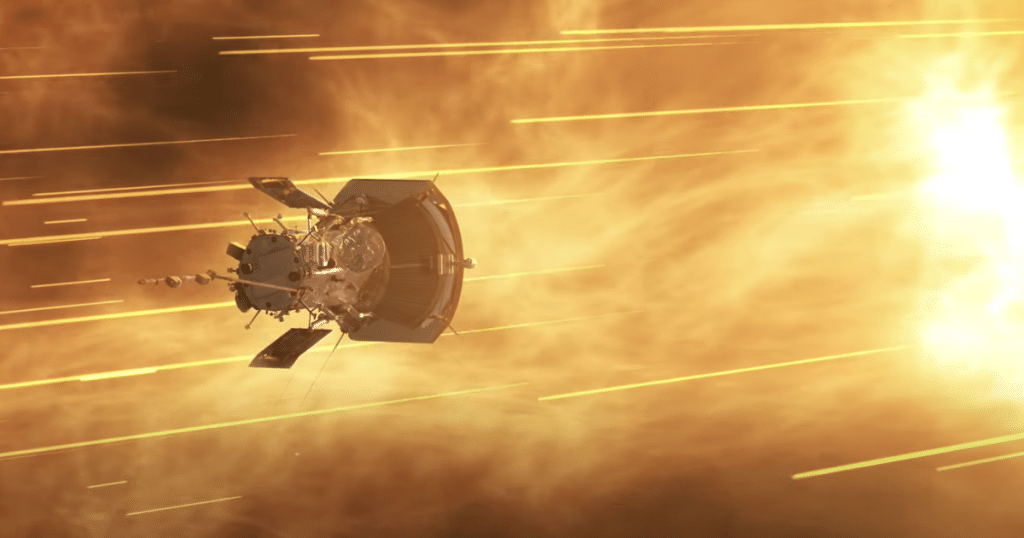Nasa’s remarkable Parker Solar Probe has survived a potent coronal mass ejection as it entered the solar atmosphere to study the sun, according to the US space agency as it also shot a video capturing the impact.
The probe passed on September 5, 2022, according to a press release by Nasa.
A video was also captured showing how the probe rushed through the violent activity of the Sun.
According to Nasa, the probe survived its flight “through one of the most powerful CMEs ever recorded – not only an impressive feat of engineering but a huge boon for the scientific community.”
During solar maximum, the magnetic field on the sun is at its lowest which is not good for Earth, as the magnetic fields act as a shield stopping emanating solar radiation and preventing solar flares and coronal mass ejections (CMEs).
According to Nasa: “Sunspots are areas that appear dark on the surface of the Sun. They appear dark because they are cooler than other parts of the Sun’s surface.”
A video shot by Nasa’s Parker Solar Probe.
The magnetic field lines near sunspots cause explosions as they reorganise causing solar flares. It releases a lot of radiation into space. The intense explosion, releases radiation that can interfere with our radio communications here on Earth, said Nasa.
Apart from this, another concern is solar storm events in which huge amounts of CME take place, travelling from space to hit the Earth’s magnetic field.
Their effects could spark geomagnetic storms. As a result, the satellites, communication, internet connectivity, and GPS could be disrupted or damaged. It could also cause power grid failures.
According to a theory proposed in 2003, CMEs may interact with dust situated in the interplanetary area made up of asteroids, comets, and more, and carry it outward.
Guillermo Stenborg, an astrophysicist at the Johns Hopkins Applied Physics Laboratory (APL), and the lead author of a paper discussing what the Parker Solar Probe taught scientists, said that the probe showed that exact thing happening.
‘It’s difficult to observe the patterns of dust from a distance, so the probe provided a unique opportunity to study the phenomenon.”
“These interactions between CMEs and dust were theorized two decades ago, but had not been observed until Parker Solar Probe viewed a CME act like a vacuum cleaner, clearing the dust out of its path,” said Stenborg.
The CME that the probe observed “displaced the dust all the way out to about 6 million miles from the Sun,” said Nasa, though that dust was “almost immediately” replenished.
As more data pours in, further insight into the CMEs and dust interaction may provide an understanding of how solar activity may impact the Earth.
The Parker Solar Probe, launched in 2018 will continue its journey, travelling through the sun’s atmosphere.

